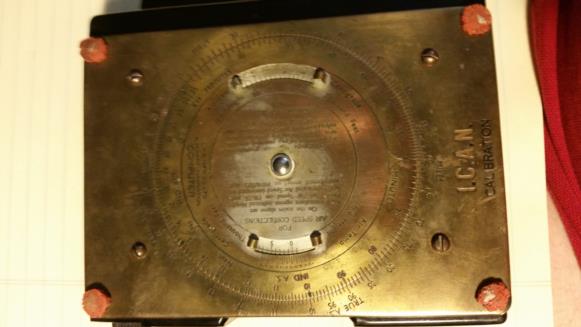
NavList:
A Community Devoted to the Preservation and Practice of Celestial Navigation and Other Methods of Traditional Wayfinding
Re: E6B/Dalton Computer
From: Gary LaPook
Date: 2015 Mar 15, 21:30 -0700
From: David Pike <NoReply_DavidPike@fer3.com>
To: garylapook@pacbell.net
Sent: Sunday, March 15, 2015 4:16 AM
Subject: [NavList] E6B/Dalton Computer
From: Gary LaPook
Date: 2015 Mar 15, 21:30 -0700
Did your first computer look like mine?
gl
From: David Pike <NoReply_DavidPike@fer3.com>
To: garylapook@pacbell.net
Sent: Sunday, March 15, 2015 4:16 AM
Subject: [NavList] E6B/Dalton Computer
Ed said Yes, these names are something. Also take the name of the popular E6B flight dead recokning device for pilots.I have never found many references to Rude, the one the star finder is named after. Perhaps others on the NavList know of him.
Wikipedia says "The E-6B was developed in the United States by Naval Lt. Philip Dalton (1903–1941) in the late 1930s. The name comes from its original part number for the U.S Army Air Corps in World War II.". There's also lots about it on this site around
2008. I mention it, because when I joined the UK Air Cadets in the 1950s, the RAF still called them Dalton Computers. The Air Cadets had the hand downs from WW2, and ours were about an inch thick with a continuos fabric belt inside rather than a slide. Some even had thigh straps. When I started navigator training in the late 60s, I was very proud to be issued with the thin aluminium version, and when I joined the V Force a couple of years later, I was even more impressed to be issued with an extra slide, "the Mears slide" after Wally Mears its inventor, to go inside it for sextant acceleration corrections. We must have a liking for surnames, because the square protractor is still called the "Douglas Protractor" after its inventor Vice-Admiral Sir Henry Percy Douglas to this day. Dave









